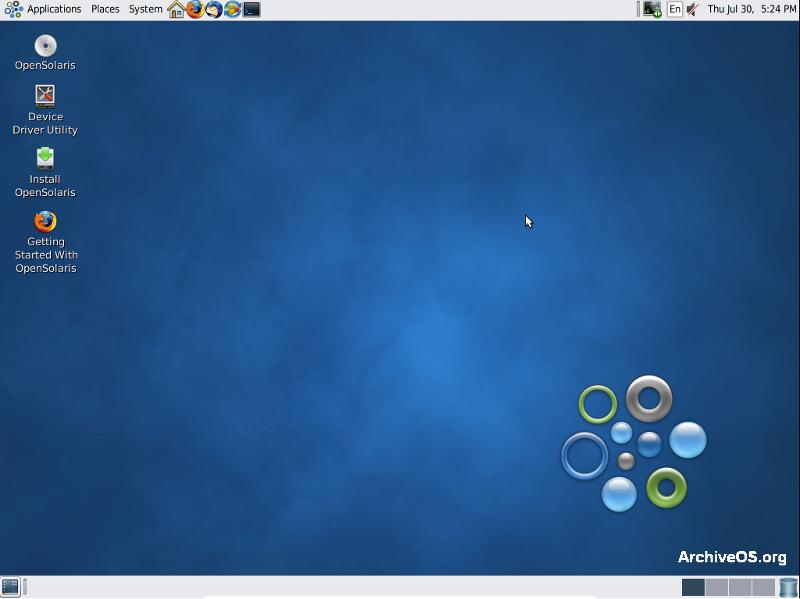Solaris History
Sun's operating system is initially called Sunos, because one of Sun Microsystem's founder, Bill Joy comes from u.c.berkeley, so SunOS is primarily based on BSDunix version. SUNOS 5.0 starts, Sun's operating system development begins to turn to System V Release 4, and has a new name called Solaris 2.0; Solaris 2.6, Sun deletes "2, so SUNOS 5.10 is called Solaris 10. Solaris The earlier version was later rentered as Solaris 1.x. So "Sunos" This word is used to specify the kernel of the Solaris operating system, so Solaris is considered to be computing by SunOS, graphical desktop computing environment, and its network enhancement Partially consisting.
System architecture
Solaris supports multiple system architectures: SPARC, X86 and X64.x64, AMD64 and EMT64 processors. When version 2.5.1, Solaris once It was once ported to the PowerPC architecture, but later was deleted when this version was officially released. Compared with Linux, Solaris can support symmetrical multiprocessors more effectively, the SMP architecture. SUN also announced the follow-up of Solaris 10 The Linux running environment is available in the release, allowing Linux binaries to run directly on Solaris x86 and x64 systems.
Solaris traditionally close the hardware architecture based on Sun SPARC processor, in design and market It is often bundled together, and the reliability and performance of the entire hardware and software system is also greatly enhanced. However, the cost and price of the SPARC system are usually higher than those of the PC class, which has become a further popular obstacle of Solaris. Very happy Yes, Solaris pairs x86 The support of the architecture is greatly enhanced, especially Solaris 10, which has enabled X64 (AMD64 / EMT64) architecture. SUN has launched self-designed AMD64-based workstations and servers, and randomly comes with Solaris 10.
Desktop Environment
Solaris Most source code has been published in the OpenSolaris open source project under CDDL licenses. Binary and source code can be downloaded and licensed without any fees.
Sun's Common Development and Distribution License is selected to make OpenSolaris licenses and passed Open Source Initiative review and approval (although it is incompatible with each other, the GPL is incompatible with each other [1]).
OpenSolaris officially launched on June 14, 2005, source code from the current Solaris development version. Solaris Future The version will be derived from OpenSolaris.
Main Version
Solaris latest (February 2006) The main release version is as follows:
| Solaris version | Sunos core version | release date | Introduction | Solaris 10 < / P> | SunOS 5.10 | January 31, 2005 < / TD> | includes DTRACE (dynamic tracking), Solaris Containers, Service Management Facility (SMF), SMF replaces traditional UNIX INIT.D scripts, and iSCSI support. Based on GNOME-based Java Desktop System as the default desktop, CDE is also included. | |||||||
| Solaris 9 | Sunos 5.9 < / p> | May 22, 2002 | The most recent update is Solaris 9 9 / 05 | |||||||||||
| solaris 8 | sunos 5.8 | February 2000 | including Multipath I / O. Introduction Role-based Access Control (RBAC) feature. The most recent update is Solaris 8 2/04. [2] | November 1998 | The first 64-bit version. [3] | |||||||||
| solaris 2.6 | SunOS 5.6 | July 1997 | including Kerberos5, PAM, TrueType Font, WebNFS [4] | solaris 2.5.1 | SunOS 5.5.1
| May 1996 | User ID (UID_T) is extended to 32-bits. [5] | |||||||
| solaris 2.5 | SunOS 5.5 | November 1995 | first support Ultra 1 and included CDE [6] |
Sun is no longer sold but still supports Solaris 7 and Solaris 2.6 but still support. Early versions have not supported.
SunOS is still used to call the core of Solaris. The version number of SunOS is expressed in 5. {Solaris version number}. For example, the latest Solaris release versions, Solaris 10, running on SunOS 5.10. Solaris's Manbook is marked with SunOS and also shows it when starting, but "Sunos" is no longer used in Sun's market documentation.

